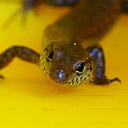Member-only story
Hedge-hopping Birds
On the track of scrubwrens

Southern Highlands, New South Wales
The camellia hedge is full of birds. It is a fine hedge, tall and dense and straight-edged, so neat on the outside that it looks as though it has been trimmed with a laser. But behind the big glossy leaves, in the tangle of branches, Superb Fairy-wrens and White-browed Scrubwrens hunt for insects, build tiny nests and engage in all sorts of avian shenanigans.
For the past few days, the overnight temperature has dropped below zero. In the morning, frost glitters on the hedge tops. The cold does not perturb the bigger birds — Little Ravens, Red Wattlebirds, and Crimson Rosellas. They fly in at first light to check the neighbourhood chook pens for food that the hens might have missed. The smaller birds are more reluctant to venture out. They fossick through the dead leaves at the base of the hedge, ready to dart back to shelter if there is need.
Superb fairy-wrens, so active in the garden in late spring and summer, are quiet at the moment. The males are yet to moult into their fancy plumage — sky-blue and ultramarine edged in black — but it won’t be long before they do. Cherry trees are already in blossom.
White-browed scrubwrens are bolder. In the morning, they call from deep within the camellia hedges. In the afternoon, when the sun falls on the flower beds and the air is warm, they come out to inspect the foliage. With their straight white brows and thick moustaches and their piercing pale eyes, they look serious and — I’m sorry to tell you this, scrubwrens — a little bit officious. They have opinions about the garden and they are keen to share them. If I watch them from the back step, they offer opinions. If I am at the desk, they come to the window and offer opinions. Only on cold mornings, when they are tucked away in the hedges, do they keep their opinions to themselves.
